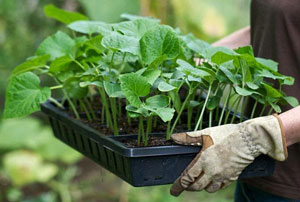 Growing seedlings eggplant at home is quite a feasible task even for a beginner, if you approach this matter not from a “swoop”, take it - do it, and thoroughly prepare yourself theoretically. It should be borne in mind that of all nightshade vegetable crops, eggplant is the most capricious, especially at the seedling stage, but if you follow all the rules, then your work will be rewarded with a high yield of tasty and healthy vegetable. Before you begin the process of sowing seeds for seedlings, you should prepare both the seeds themselves and the soil.
Growing seedlings eggplant at home is quite a feasible task even for a beginner, if you approach this matter not from a “swoop”, take it - do it, and thoroughly prepare yourself theoretically. It should be borne in mind that of all nightshade vegetable crops, eggplant is the most capricious, especially at the seedling stage, but if you follow all the rules, then your work will be rewarded with a high yield of tasty and healthy vegetable. Before you begin the process of sowing seeds for seedlings, you should prepare both the seeds themselves and the soil.
Eggplant seed preparation
- trial landing;
It should be noted that the germination capacity of eggplant seeds sharply decreases depending on the shelf life, so seeds two years ago should definitely be tested for germination, if it corresponds to more than 50%, then the seeds can be used for planting. Some of the stored seeds are soaked and then germinated in a wet state, this procedure is carried out a month before the main preparatory work with the seeds. If you have seeds collected from last year's crop, then you do not need to subject them to a test planting, subject to proper storage.
- selection;
Prepare a 4% salt solution, pour the seeds into it, give them time to wet, about five to ten minutes, observe how many seeds float to the surface, these seeds should be discarded. The remaining seeds plunged deep into the solution are recovered and dried.
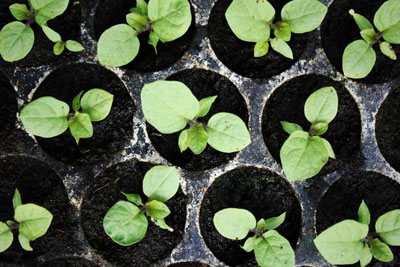
- disinfection;
The selected seeds for growing eggplant seedlings at home (video) are placed in a bag of gauze and dipped in a pink potassium permanganate solution for 15 minutes, then removed and lowered into a container of clean water for washing, then the seeds are removed from the bag and dried.
You can use another way to disinfect eggplant seeds before planting for seedlings, for this they are placed in a thermos with hot water, not higher than 55 ° C and incubated for 4 to 5 hours. Find out, when to plant eggplant for seedlings in 2016.
The third option for disinfection can be used if you purchase a special fungicide “Fitosporin M” or “Vitaros” and follow the instructions for use.
- stimulation;
In order to have great confidence that the seedlings will not take long to wait, even before planting the seeds they need to be “woken up”, which will help to make a growth stimulator, which can be purchased at the store, for example, the Energen preparation.
Experienced gardeners use solutions rich in trace elements to stimulate growth, the most popular is an aqueous solution of wood ash and a mixture of water with aloe juice. Maintain the material selected for growing eggplant seedlings at home from seeds in a stimulant solution for 12 hours, and this procedure should be carried out two to three days before planting seeds for seedlings.
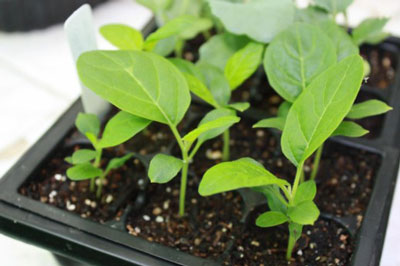
- soaking, hardening, germination;
After completing the above procedures, the seeds are soaked in water at room temperature, after they swell, they are placed in a cold place with a temperature of 1-2 * C for 36 hours, or they are subjected to a sharp change in temperature several times a day.
After hardening, the seeds are laid out on a damp cloth, covered and left in a warm place for germination, when the sprouts reach a size of 5 mm, the seeds are sown for seedlings, having previously prepared the soil and containers.
Soil preparation
This process involves the implementation of two stages, the preparation of a soil mixture, and then its disinfection.Nowadays, there are no problems with the soil, in stores you will be offered a nutritious ready-made mixture for any crop, but if you want not to make unnecessary costs, then it is quite possible to prepare a high-quality mixture yourself.
Experienced gardeners do not trust store mixes and prefer to grow eggplant seedlings at home (photo) on soil prepared according to their own special recipe. However, the most popular and versatile is soil made from a mixture of peat, sand and leaf soil, taken in a ratio of 2: 1: 1.
Recommended:What can hurt eggplants in a greenhouse and how to treat them
Instead of sand, perlite and vermiculite can be added if desired, these two special additives to the soil contribute to its optimal loosening, which increases aeration and also reduces its acidity. With such additives, the soil will not form coarse dense lumps that block oxygen access to the roots and allow the roots to distribute freely and evenly in the substrate, which will certainly affect the development of the root system and the quality of the seedlings themselves.
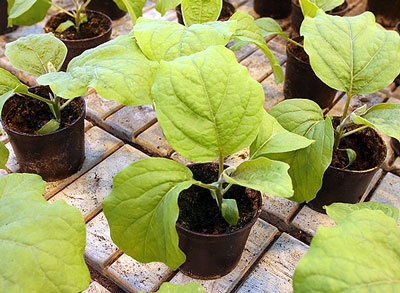
After the mixture is made, it should be proizensed by choosing one of the methods tested experimentally:
- spill the soil mixture with boiling water;
- calcine in the oven;
- Steam in a double boiler.
Ready soil is laid out in prepared containers or containers, however, given the fact that the root system of the eggplant is very tender, they tolerate picking, and an inept picking can generally reduce yield by 20%, it is better to sow the seeds immediately in cups. By choosing this method of planting seeds, you can use peat tablets or cardboard cups, in which later seedlings will be planted in the ground. In this case, you will need to be careful when watering, as the soil undeveloped by the root system can become a source of various diseases, including the black leg.
In order to protect yourself from this scourge, you can use the method of so-called transshipment, when the seeds are planted in very small containers, it can be an egg shell, and then, by the time of a pick, a land lump with roots is transplanted into glasses of a larger capacity. When growing eggplant seedlings at home, the pick may well be replaced by a pass, with a greater guarantee of a high yield. In cups, drainage should be provided, a small amount of the prepared soil should be poured, then an “earthen clump with roots” should be “exceeded”. You know how to get rid of moles in a summer cottage.
Seed planting
The planting dates for eggplant seeds are determined by the expected, in your region, onset of stable nightly positive temperatures, 65 - 75 days are taken from this period, which are required for the seedling development phase that is necessary at this time. For the middle lane, this period will be in early June if planting is done in open ground and in early May if it is supposed to be planted in a greenhouse.
Before planting, the mixture prepared on its own should be fertilized with a small amount of complex fertilizers, for which the soil spread over the containers is watered with fertilizer prepared as described on the package.
Sprouted seeds are taken with tweezers and laid out in glasses or containers at a distance of at least 4 - 5 cm, sprinkled with a layer of dry soil 2 - 3 cm.
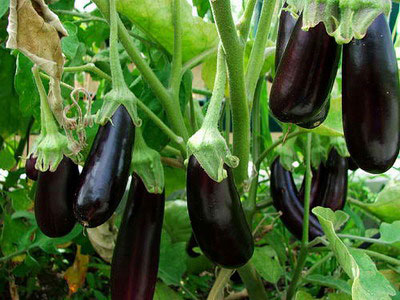
The entire planting is covered with a film and placed in a warm place with a temperature of 25-30 C, as soon as the first sprouts appear, the temperature should be reduced to 14-16 C, if you neglect this "trifle", the seedlings will be elongated with a weak underdeveloped root system.
After a week, the seedlings are transferred to a new temperature regime, providing up to 26 C during the day and a maximum of 14 C at night.
From the first days, seedlings should also provide additional artificial lighting, depending on the region, so growing eggplant seedlings at home in Siberia, provides for mandatory luminescent lighting up to 80 watts.
Seedlings should be constantly rotated to ensure that all plants have equal favorable growth conditions. If you pick it up nevertheless, subject to the presence of 2 to 3 true leaves, then seedlings up to cotyledonous leaves should be covered with a land mixture.
Fertilizing seedlings eggplant in a greenhouse or in pots should also be carried out regularly, using either complex ready-made fertilizers, or chicken droppings prepared in a ratio of 1:15, as well as mullein in a ratio of 1:10.
The first top dressing should take place 2 weeks after emergence, the subsequent top dressing is carried out after 3-4 weeks.
Before planting in open ground, seedlings should be pre-tempered, taking its air out for a while, depending on weather conditions. The time spent by the seedlings in the fresh air is gradually increasing; seedlings are planted in the soil if the plants have 8 to 12 true leaves.
So, having studied the material, we can conclude that the cultivation of seedlings of peppers and eggplant at home is not such a difficult task, especially since these cultures belong to the same family and all recommendations are similar.

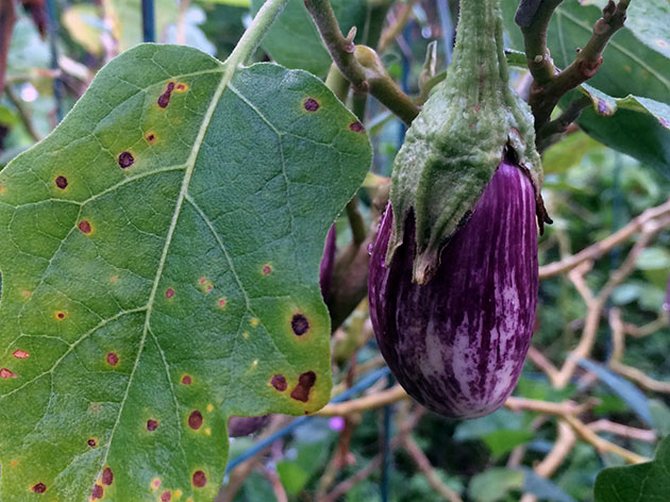
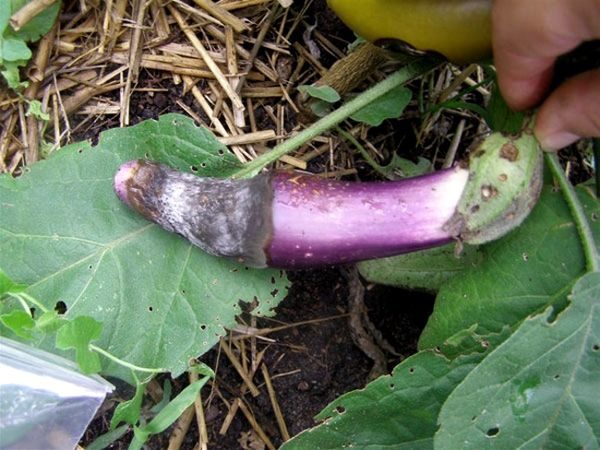
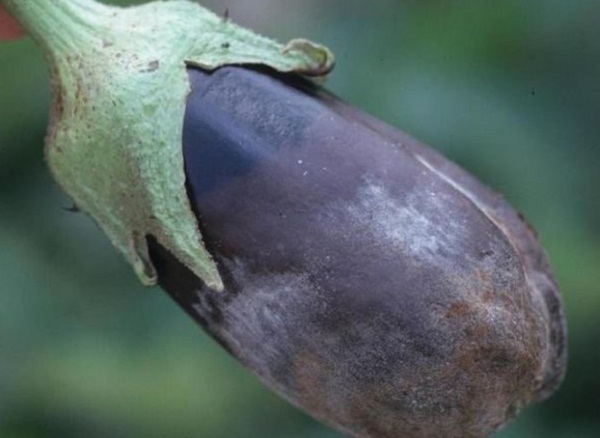
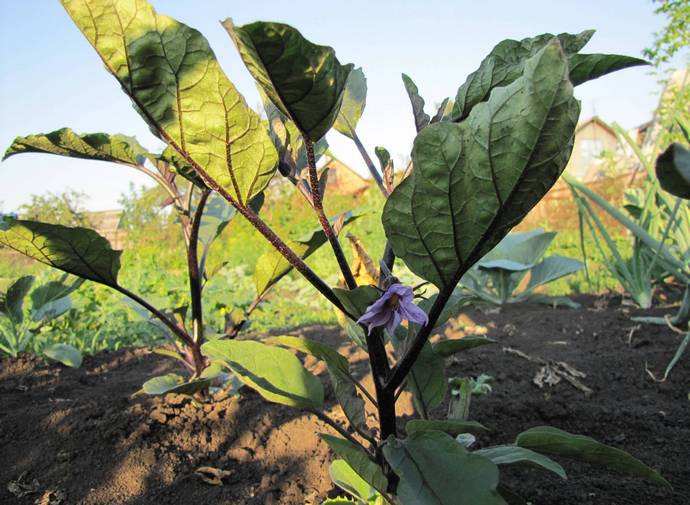 Eggplant have a empty flower? Save together with simple methods
Eggplant have a empty flower? Save together with simple methods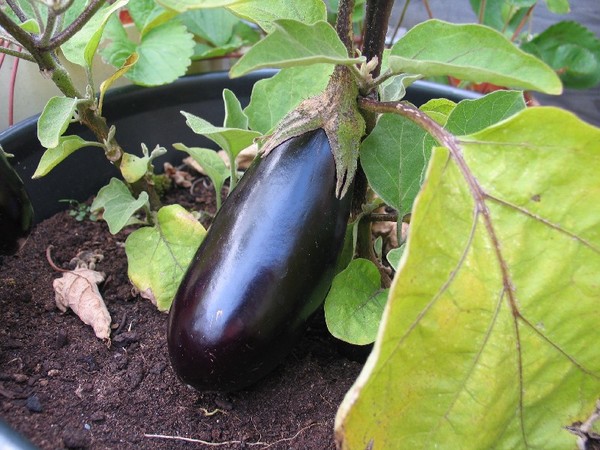 Why and what to do if the leaves turn yellow and wilt in the eggplant
Why and what to do if the leaves turn yellow and wilt in the eggplant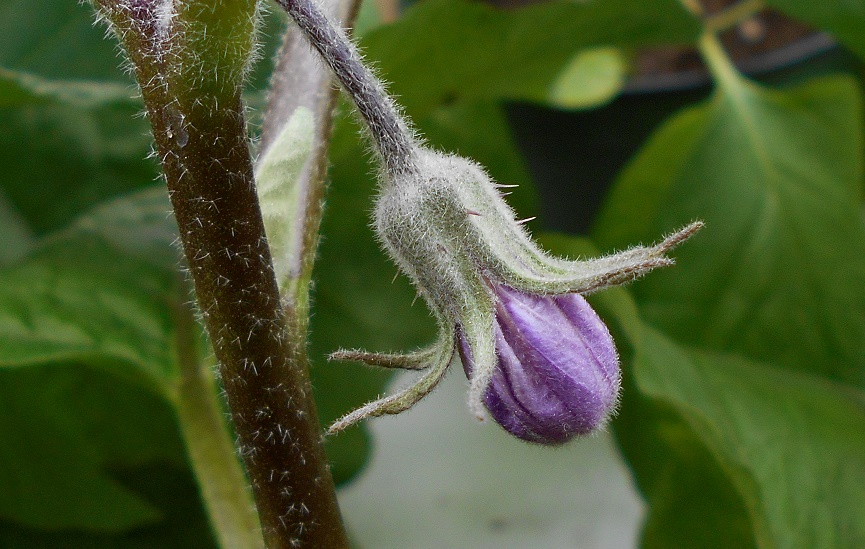 How to help eggplants to prevent flowers falling in the greenhouse?
How to help eggplants to prevent flowers falling in the greenhouse?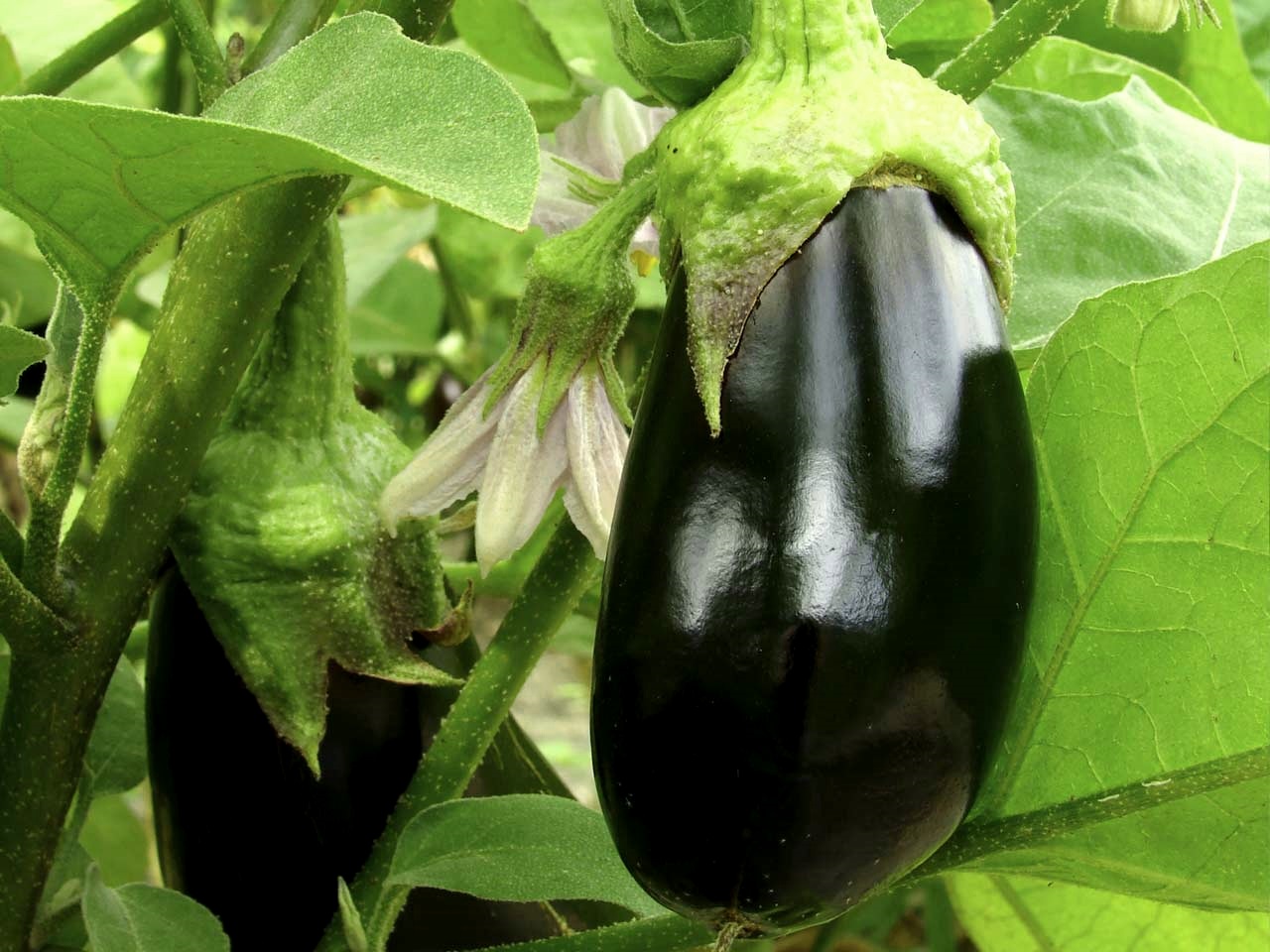 What to do to get a good eggplant crop in a greenhouse
What to do to get a good eggplant crop in a greenhouse